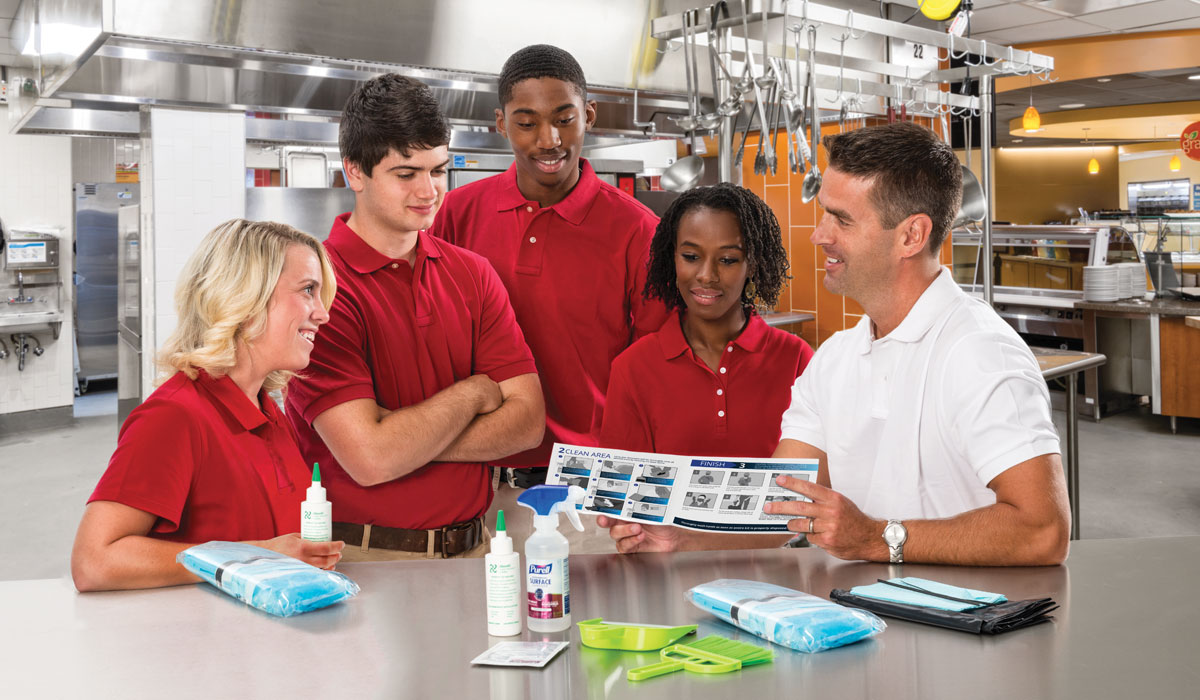Why norovirus is so serious
Norovirus is highly contagious and can infect anyone. You can get it from an infected person, contaminated food or water, or by touching contaminated surfaces. The virus inflames the stomach and intestines, causing stomach pain, nausea, diarrhea, and vomiting.
These symptoms can be serious for some people, especially young children and older adults, who may become severely dehydrated. Each year, norovirus causes an average of 64,000 hospitalizations and 570 to 800 deaths, mostly in young children and the elderly.
A very small amount of norovirus can make someone sick. As few as 18 viral particles of norovirus on food or hands will do the job. That’s not many. The number of norovirus particles that could fit on the head of pin is enough to infect 1,000 people.
For all these reasons, food establishments need to pay special attention. Restaurants, banquet facilities, and catering combine to cause a staggering 81 percent of norovirus outbreaks. By comparison, health care facilities only cause 1 percent. In the U.S., norovirus is the leading cause of disease outbreaks from contaminated food.
Norovirus often gets attention for causing illness on cruise ships, but those account for only about 1 percent of reported outbreaks.
Because of its contagiousness, every vomit incident in a food establishment needs to be treated as if it is infected with norovirus. Because particles can also be airborne, it is vital to thoroughly clean and sanitize the site immediately.
What works and what doesn’t
Norovirus is hard to kill and stays on food, kitchen surfaces, and utensils. It can remain infectious on foods even at freezing temperatures and until they are heated above 140 degrees. It can remain active and alive on utensils, countertops, and other surfaces for up to two weeks.
Norovirus is also resistant to many common disinfectants and sanitizers. For example, bleach must be left on an infected surface for five full minutes before it kills the virus, and then the site must be thoroughly rinsed. Quat cleaners are completely ineffective against norovirus.
And forget about using the house mop and bucket. Norovirus will cling to both for weeks after use, increasing the risk of spreading illness throughout your establishment. Remember, enough viral particles of norovirus to infect 1,000 people will fit on the head of a pin, and you’ll have a bucket full of them.
So for truly effective cleaning, you need a self-contained spill kit, in which every item used during the cleanup process is disposed of after cleanup is complete.
The kit should include personal protective equipment including shoe covers, full gown, face mask, hairnet, and gloves.
It should include a surface sanitizer that kills norovirus as quickly as possible, a solidifying agent to turn liquids into solids, a scraper and hand mops, and paper towels. Any cleanup tools should have long, sturdy handles to prevent the person who is cleaning from coming in contact with the spill.
Finally, the kit should have two trash bags for double-bagging the items to be discarded.
Because every item in the kit needs to be thrown away, it would be ideal for the kit to consist primarily of biodegradable materials to minimize environmental impact.
How to respond
First, close the immediate area around the vomit for the protection of the public and other employees.
Next, put on all personal protective equipment and follow kit instructions for complete cleanup.
When finished, place all cleanup materials in the first trash bag. Remove personal protective equipment and place in the bag, being careful not to touch gloves with bare hands.
Seal the first trash bag and place it in the second trash bag. Seal this bag and take it outside to the dumpster.












